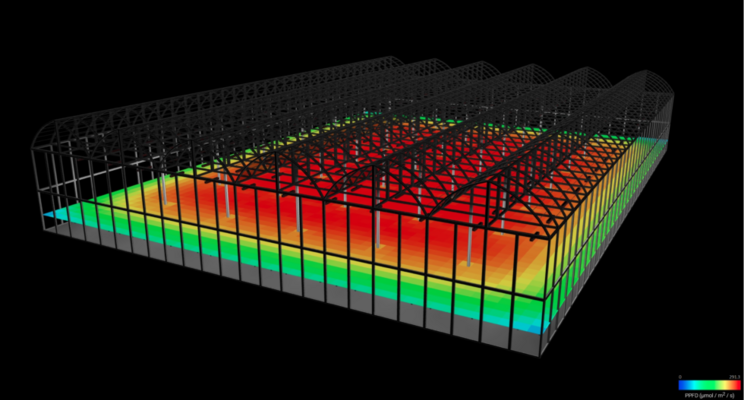Lighting uniformity in horticulture
Added on 16 August 2022

Written in 2015, "Greenhouse Design and Control" (Ponce et al. 2015) is extraordinarily comprehensive in its coverage of greenhouse design issues, from site selection through structural load bearing analysis and ventilation technologies to greenhouse automation using adaptive neural fuzzy inference systems. On the topic of greenhouse lighting, however, it has only this to say: "The light level in the greenhouse should be adequate and uniform for crop growth."
The authors note that quantum (PAR) sensors are commonly used for photosynthetic photon flux density (PPFD) measurements, but give no guidance on how to measure the lighting uniformity in a greenhouse. This topic has been occasionally discussed in the literature (Both et al. 2002, Ciolkosz et al. 2001, Eaton 2021, Ferentinos et al. 2005, Runkle 2017), but only in the context of supplemental lighting using lighting design software intended for architectural applications. The combination of ever-changing daylight and electric lighting has yet to be considered.
None of these discussions however address the central question: what is "lighting uniformity" in horticulture, and how do we measure (or predict) it?
Image Courtesy of Agritech Tomorrow
Source: Agritech Tomorrow
More news















